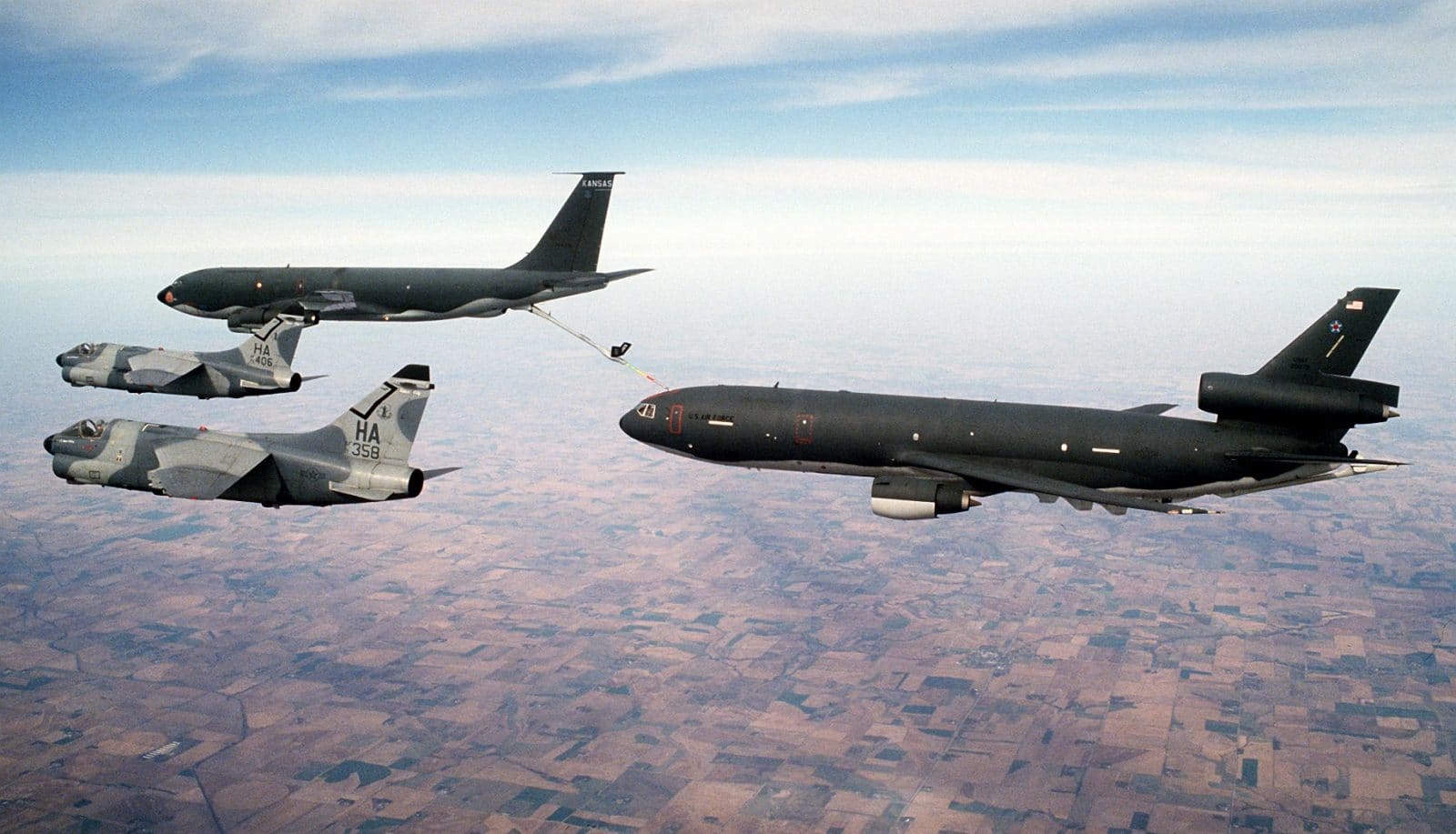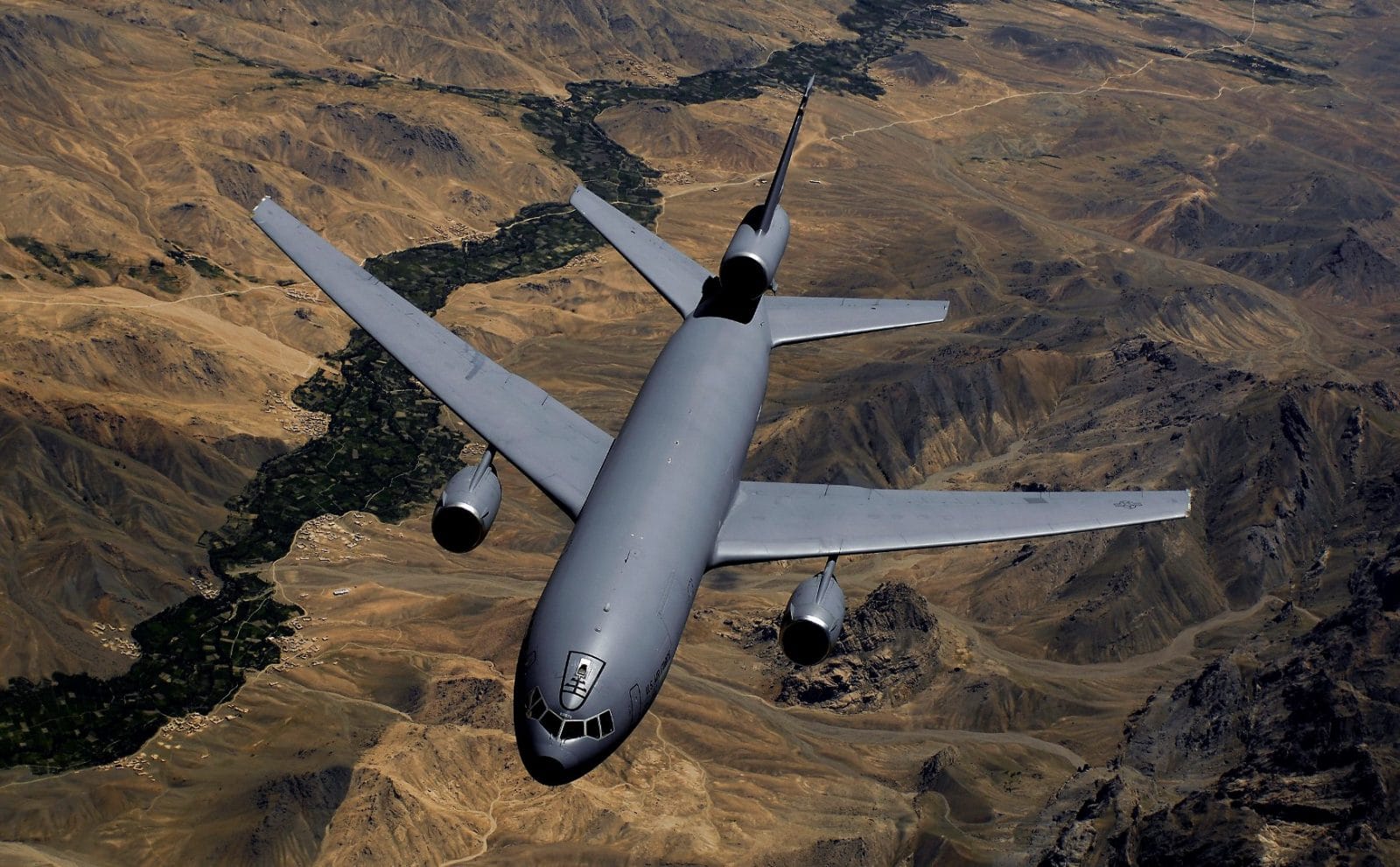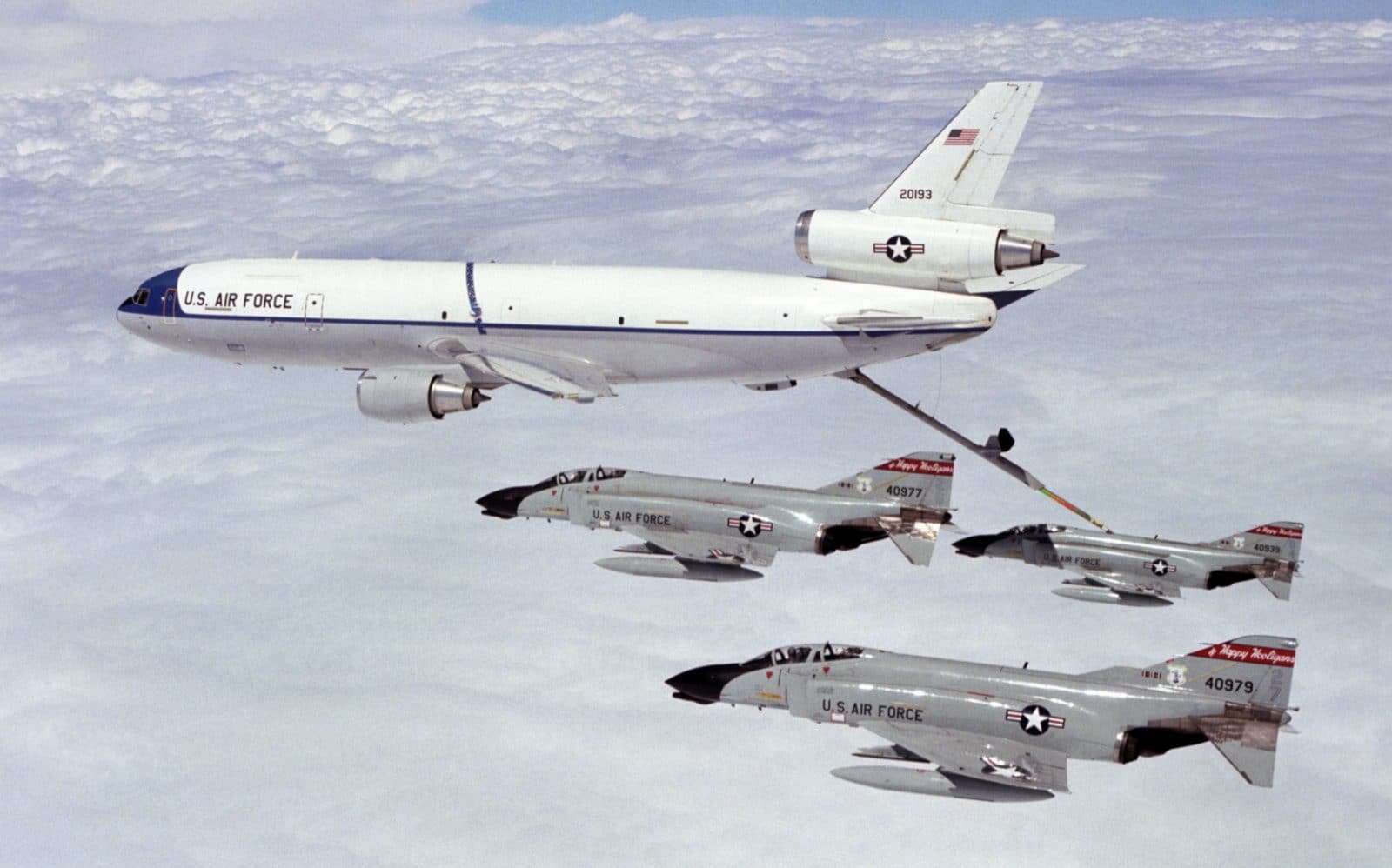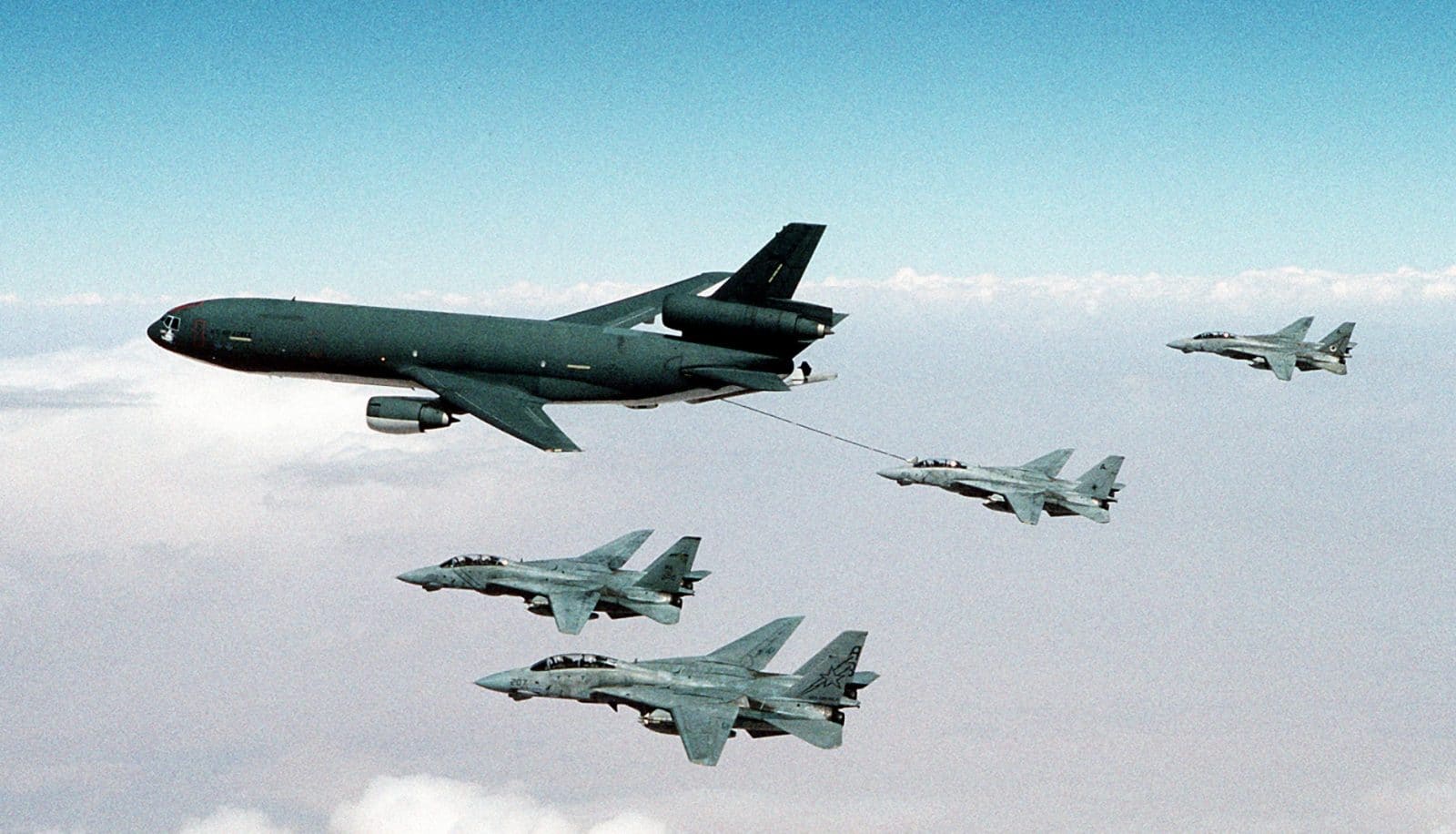Supporting Combat Operations for Decades
During refueling testing in October of 1980, the first aircraft to be plugged and passed gas by the KC-10A Extender was a Lockheed C-5A Galaxy– at one point a potential rival. Strategic Air Command (SAC) took delivery of the first KC-10As at Barksdale Air Force Base (AFB) in March of 1981. The last of the 60 KC-10As built was delivered to SAC in November of 1988. When SAC was disbanded in 1992, the US Air Force’s Air Mobility Command (AMC) became the new owners of the Air Force’s youngest tanker fleet. Several SAC KC-10As were utilized to refuel the F-111 Aardvarks and other aircraft forced to fly around the European land mass from the UK to Libya and back during Operation El Dorado Canyon in 1986.

Passing Critical and Tactical Gas
During Operations Desert Shield and Desert Storm KC-10As took advantage of their flexible load carrying capability to move thousands of tons of cargo and thousands of personnel while refueling aircraft en route to the sandbox. Without missing a single scheduled transfer, KC-10As and KC-135s performed more than 51,000 plugs delivering more than 125 million gallons of fuel. KC-10As have also passed gas during Operation Allied Force, kept interceptors and surveillance aircraft fueled up during these tense post-9/11 days of Operation Noble Eagle, and flown thousands of sorties in support of US and NATO armed service general refueling requirements.

Early Retirement? We Hope Not!
Talk of retirement for the 59 KC-10As in service seems premature. The aircraft are (or were) expected to serve through 2043. The ability to refuel as many as three aircraft simultaneously and the higher transferable fuel capacity of the KC-10A seem to make it a solid platform, but politics will surely muddle up the process. The aircraft’s versatility and relative youth are also points in its favor. Boeing began a modernization program in 2010, updating navigation, communications, air traffic management, and surveillance equipment. A 2011 contract for avionics and cockpit updates was awarded to Rockwell Collins.

Today’s Extenders
Today the KC-10A Extender is operated by the 305th Air Mobility Wing (AMW) based out of Joint Base McGuire-Dix-Lakehurst near Trenton in New Jersey and the 60th AMW based out of Travis AFB not far from San Francisco in in California. The Air Force Reserve (AFRES) 349th AMW (at Travis AFB) and the 514th AMW (at McGuire) also operate KC-10As. Gone are the days when KC-10As were painted in those gorgeous white/gray/blue SAC colors. We endured the green over gray years and now we’re stuck with overall gray. Progress?

The Dutch Connection
The Royal Netherlands Air Force (Koninklijke Luchtmacht or KLu) operate two KDC-10s. They are former Martinair DC-10-30CF aircraft that were converted to tankers by KLM Airlines. One of the aircraft slated for conversion crashed in 1992, forcing the KLu to purchase a third DC-10 from Martinair. These aircraft do not have the drogue refueling equipment installed. They entered service with the KLu 334th Squadron in 1995 as the only other military operators of DC-10-based aerial refueling tankers.

Civilian Look-Alikes
Omega Aerial Refueling Services and Global Air Tanker Service each operated a single KDC-10 tanker. These lease aircraft are equipped with the wingtip drogue pods and have often supported large surge activities and fighter drags. These are former DC-10-40 aircraft. Omega’s N974VV is still active but Global’s N825V has been stored at Marana for many years. DC-10s are also being utilized as aerial firebomber tankers by several companies today. So hats off to the KC-10A- the undisputed heavy-lifting gas passer.

Bonus Video
Enjoy this KC-10A Extender promo film produced by McDonnell Douglas and uploaded to YouTube by Periscope Film.
[youtube id=”zQ4kKcuuno0″ width=”800″ height=”454″ position=”left”]

Kinda curious about one of the figures in the article. It states the unrefueled range is 4,400 mile “fully loaded.” Does that mean fully loaded with cargo? I ask because the unrefueled range is 10,000 nm if nothing but a basic crew and full fuel is carried. I’m not saying the figure isn’t true, I’ve just not heard that one before. And while the design capacity is 356,065 lbs. (based on JP-4), the zero fuel weight of the aircraft typically prevents us from fueling much above 340,000 lbs. to stay below the maximum ramp weight of 593,000 lbs.